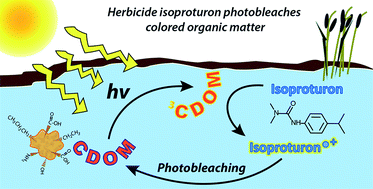Contaminant-mediated photobleaching of wetland chromophoric dissolved organic matter
Abstract
Photolytic transformation of organic contaminants in wetlands can be mediated by chromophoric dissolved organic matter (CDOM), which in turn can lose its reactivity from photobleaching. We collected water from a small agricultural wetland (Ohio), Kawai Nui Marsh (Hawaii), the Everglades (Florida), and Okefenokee Swamp (Georgia) to assess the effect of photobleaching on the photofate of two herbicides, acetochlor and isoproturon. Analyte-spiked water samples were irradiated using a solar simulator and monitored for changes in CDOM light absorbance and dissolved oxygen. Photobleaching did not significantly impact the indirect photolysis rates of either herbicide over 24 hours of irradiation. Surprisingly, the opposite effect was observed with isoproturon, which accelerated DOM photobleaching. This phenomenon was more pronounced in higher-CDOM waters, and we believe that the redox pathway between triplet-state CDOM and isoproturon may be responsible for our observations. By contrast, acetochlor indirect photolysis was dependent on reaction with the hydroxyl radical and did not accelerate photobleaching of wetland water as much as isoproturon. Finally, herbicide indirect photolysis rate constants did not correlate strongly to any one chemical or optical property of the sampled waters.

- This article is part of the themed collection: Geoscience (ESPI)

 Please wait while we load your content...
Please wait while we load your content...